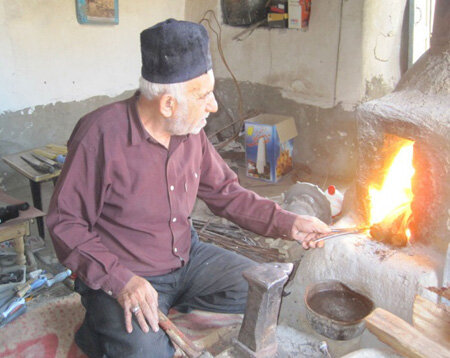Iranian handicrafts: Chalangari

TEHRAN - Chilan is a Persian word used to describe the tools and objects made from Iron such as chains, small rings, horse bridle, saddle, and many other light-weighted objects.
Chalangar or blacksmith is a craftsman who heats the iron in the kiln, forges, and turns them into desired objects. According to the Dehkhoda encyclopedia, Chalangar is a person who makes or repairs iron keys, locks, fasteners, shields, chains, pliers, nails, and other objects, and Chilangar and Chalingar are two other names for it.
A Chalingar usually works alone and they have no apprentice. In the past, the artists of this craft made scythes, hammers, horseshoes, nails, horse and cow bindles in the cities and villages.
Today since both agriculture and animal breeding have become automatic or semi-automatic, the blacksmiths now make applicable- decorative objects such as vase bases, dividers, window protectors, etc. The basics of blacksmithing are like making a knife and are done by heating the metal in the kiln, blowing, forging, and making attachments to make the final product.
In the past, doors and windows were different from their contemporary counterparts and metallic locks made by the Chalangars were attached to wooden windows. One of these locks is known as Kubeh, according to Visit Iran.
Kubeh is an object that is attached to a metallic plate on the door of the house. A visitor could simply knock the Kubeh on Golmikh to make his presence known to the owner.
Kubehs were first made of iron and then brass. Some of the old Kubeh remaining from the past belong to three hundred and fifty years ago. But using brass Kubeh began only fifty years ago. The oldest brass Kubeh can be found on the entrance door of Ebrahim Khan School in Kerman or Agha Khan School in Kashan.
AFM

Leave a Comment